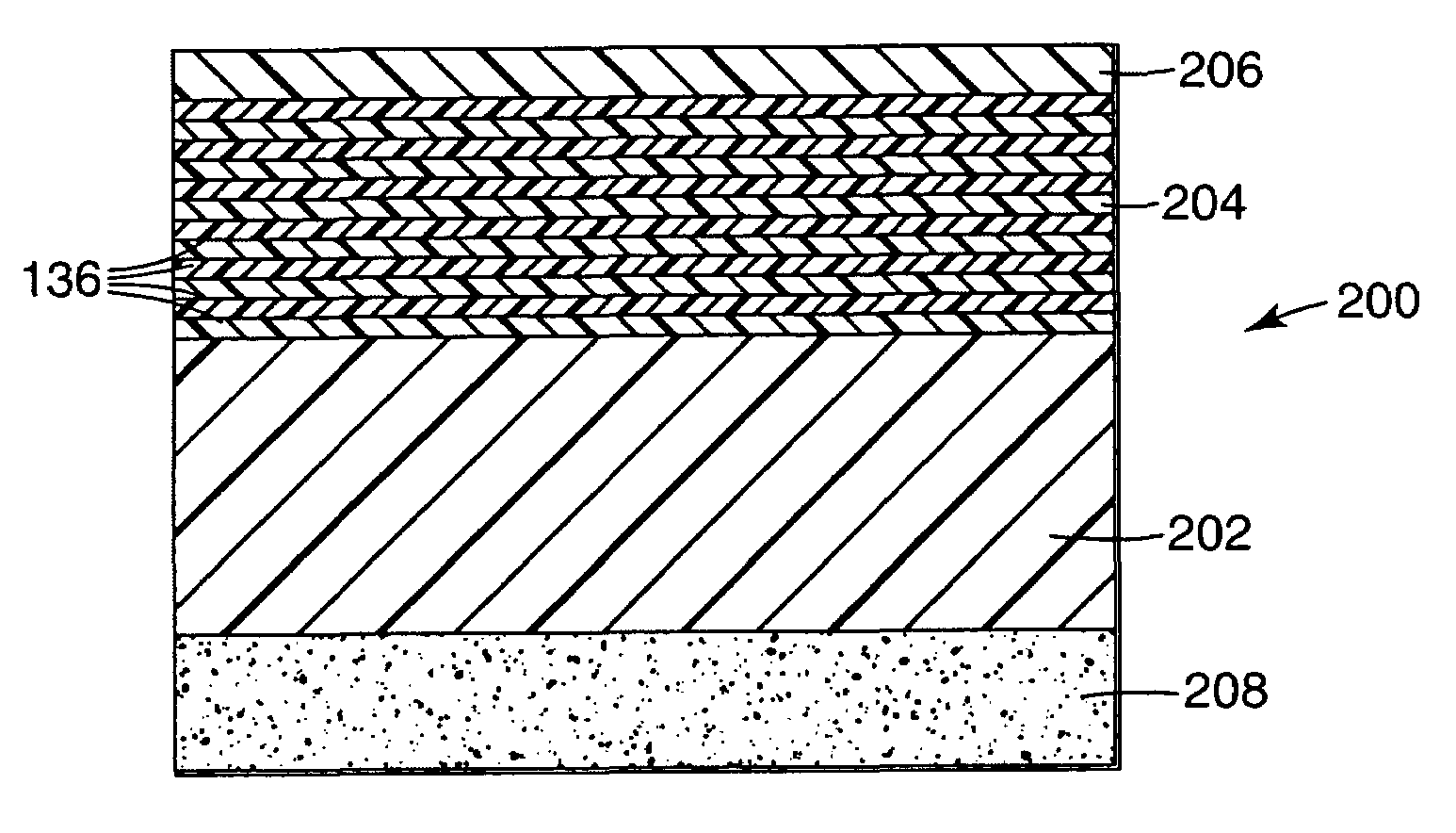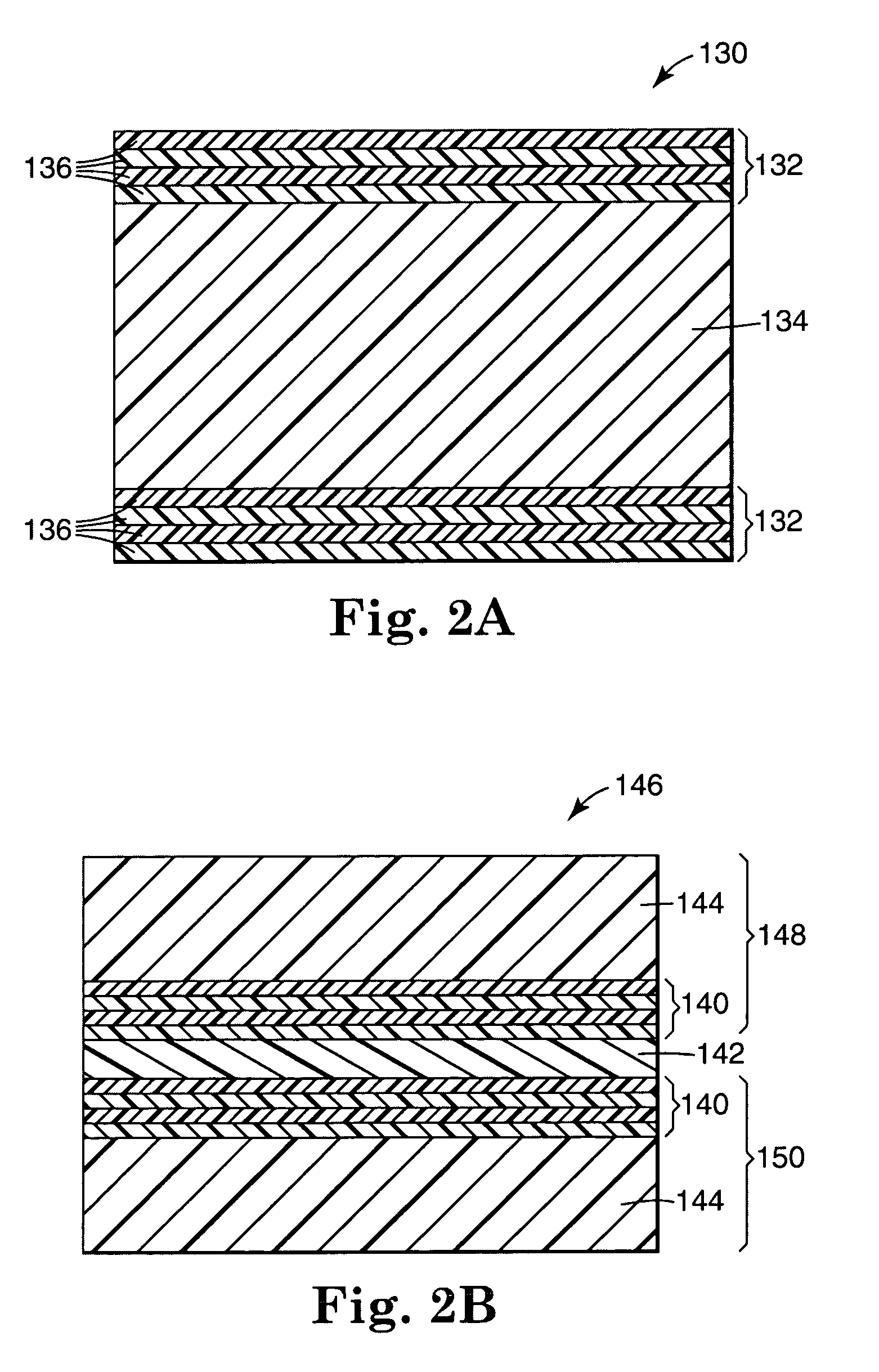Anti-reflective polymer constructions and method for producing same
- Summary
- Abstract
- Description
- Claims
- Application Information
AI Technical Summary
Benefits of technology
Problems solved by technology
Method used
Image
Examples
Embodiment Construction
Structure
[0033]Anti-reflective (AR) constructions are preferably provided in the form of free-standing films, i.e., films having sufficient mechanical integrity that they can be readily handled without the need for additional reinforcing layers. The anti-reflective properties can be tailored to cover a selected range of electromagnetic frequencies, including portions of the visible, infrared (1R), and ultraviolet (UV) regions of the electromagnetic spectrum.
[0034]The AR constructions may be used alone (such that the film forms an interface with air) or optically coupled to one or both major surfaces of a base; in the latter case, the AR construction de-reflects radiation impinging upon the surface of the base at the base / AR construction interface. The AR construction may be adhered to the surface of the base. Preferably, however, it is formed simultaneously with the base by co-extrusion, as described in more detail, below. In addition, the base / AR construction article may itself be ...
PUM
| Property | Measurement | Unit |
|---|---|---|
| Thickness | aaaaa | aaaaa |
| Wavelength | aaaaa | aaaaa |
| Refraction | aaaaa | aaaaa |
Abstract
Description
Claims
Application Information
 Login to view more
Login to view more - R&D Engineer
- R&D Manager
- IP Professional
- Industry Leading Data Capabilities
- Powerful AI technology
- Patent DNA Extraction
Browse by: Latest US Patents, China's latest patents, Technical Efficacy Thesaurus, Application Domain, Technology Topic.
© 2024 PatSnap. All rights reserved.Legal|Privacy policy|Modern Slavery Act Transparency Statement|Sitemap



